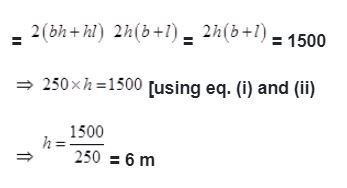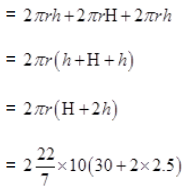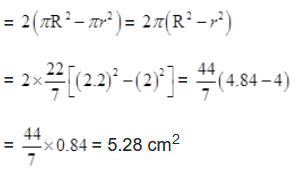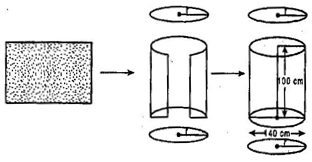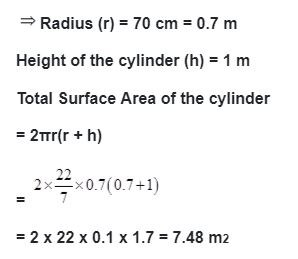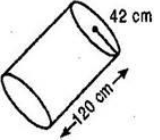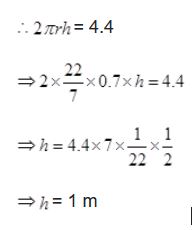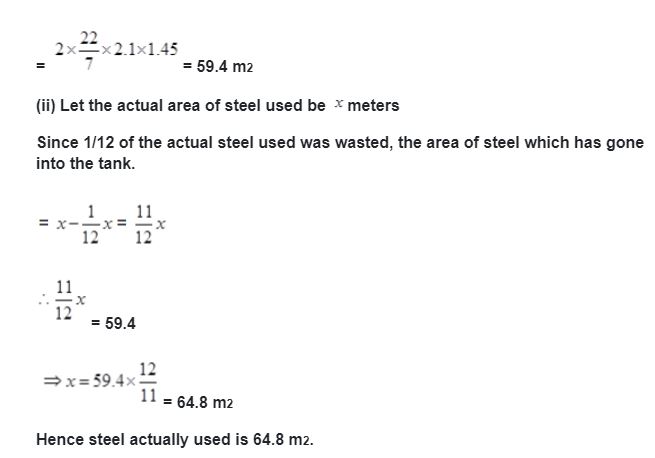Given: Length of bigger cardboard box (L) = 25 cm
Breadth (B) = 20 cm and Height (H) = 5cm

Total surface area of bigger cardboard box
= 2 (LB + BH + HL)
= 2 (25 x 20 + 20 x 5 + 5 x 25)
= 2 (500 + 100 + 125)
= 1450 cm2
5% extra surface of total surface area is required for all the overlaps.
 5% of 1450 = 5/100*1450= 72.5 cm2
5% of 1450 = 5/100*1450= 72.5 cm2
Now, total surface area of bigger cardboard box with extra overlaps
= 1450 + 72.5 = 1522.5 cm2
 Total surface area with extra overlaps of 250 such boxes
Total surface area with extra overlaps of 250 such boxes
= 250 x 1522.5 = 380625 cm2
Since, Cost of the cardboard for 1000 cm2 = Rs. 4
 Cost of the cardboard for 1cm2 = Rs. 4/1000
Cost of the cardboard for 1cm2 = Rs. 4/1000
 Cost of the cardboard for 380625 cm2
Cost of the cardboard for 380625 cm2
= Rs. 4/1000*38605= Rs. 1522.50
Now length of the smaller box (l)= 15 cm,

Breadth (b)= 12 cm and Height (h)= 5 cm
Total surface area of the smaller cardboard box
= 2(lb+bh+hl)
= 2 (15 x 12 + 12 x 5 + 5 x 15)
= 2 (180 + 60 +75) = 2 x 315 = 630 cm2
5% of extra surface of total surface area is required for all the overlaps.
 5% of 630 = 5*100*630= 31.5 cm2
5% of 630 = 5*100*630= 31.5 cm2
Total surface area with extra overlaps = 630 + 31.5 = 661.5 cm2
Now Total surface area with extra overlaps of 250 such smaller boxes
= 661.5 x 250 = 165375 cm2
Cost of the cardboard for 1000 cm2 = Rs. 4
Cost of the cardboard for 1cm2 = Rs. 4/1000
Cost of the cardboard for 165375 cm2 = Rs. 4/1000*165375= Rs. 661.50
 Total cost of the cardboard required for supplying 250 boxes of each kind
Total cost of the cardboard required for supplying 250 boxes of each kind
= Total cost of bigger boxes + Total cost of smaller boxes
= Rs. 1522.50 + Rs. 661.50
= Rs. 2184
Area of the four walls = Lateral surface area = 2(bh+hl)= 2h(b+l)
Total area of walls and ceiling of the room = 54 + 20 = 74 m2



